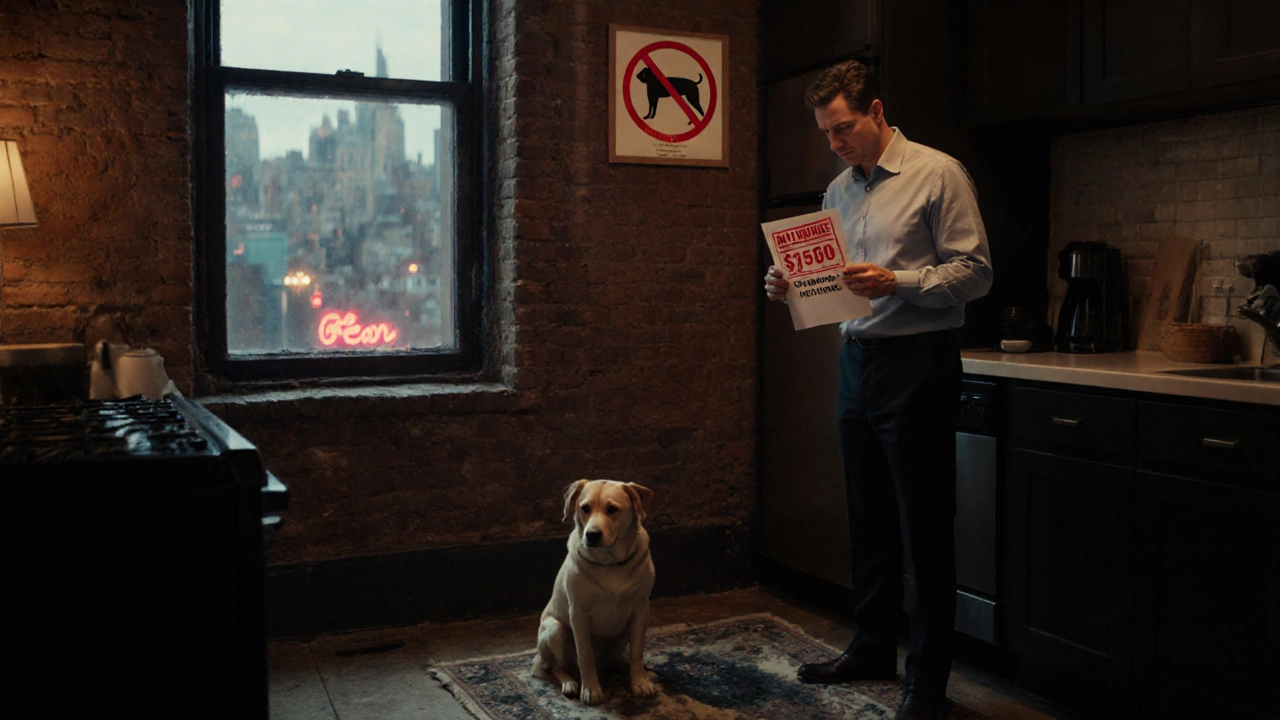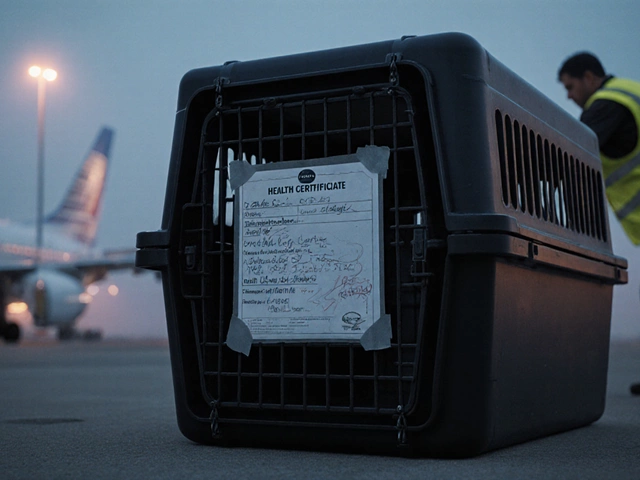
Pet-Friendly State Ranker
Compare how pet-friendly different U.S. states are based on our 2025 composite score. Enter a state name below to see its ranking and key metrics.
Pet-Friendly Score: /100
Key Restrictive Factor:
Rank:
Score Breakdown:
Top 5 Least Pet-Friendly States
| Rank | State | Score | Key Factor |
|---|
When you wonder least pet‑friendly state (the U.S. state that offers the fewest amenities, lowest legal protections, and hardest housing rules for pets), the answer isn’t a simple "Alaska" or "Texas" - it’s a mix of legislation, rental market quirks, and veterinary access. Below you’ll find the methodology, the bottom‑ranked states, why they score poorly, and practical tips if you have to travel or relocate there.
How We Measure Pet Friendliness
We built a composite pet‑friendly score (a 0‑100 index that balances legal, economic, and lifestyle factors for pets) using data from the American Veterinary Medical Association, state animal‑welfare statutes, and nationwide housing surveys (2023‑2024). The six pillars are:
- Rental pet policy - percent of rental units that allow dogs/cats without hefty fees.
- Veterinary care density - number of vets per 10,000 residents.
- Animal‑welfare law strength - how strict anti‑cruelty and shelter regulations are.
- Breed‑specific legislation (BSL) - presence of bans on particular breeds.
- Pet‑friendly public spaces - parks, trails, and beaches that officially welcome pets.
- Cost of pet ownership - average annual expense adjusted for local cost‑of‑living.
Each pillar receives a weighted score (10%‑30% depending on impact). The final number tells you how easy it is for a pet owner to live happily in that state.
The Bottom Five: States Scoring Lowest in 2025
| Rank | State | Pet‑friendly score | Key restrictive factor |
|---|---|---|---|
| 1 | New York | 38 | High rental pet fees + strict BSL in NYC |
| 2 | Massachusetts | 41 | Low vet density, costly pet taxes |
| 3 | Connecticut | 44 | Rental restrictions + limited dog‑friendly beaches |
| 4 | Illinois | 46 | BSL in Chicago, few public dog parks per capita |
| 5 | Washington | 48 | High cost of living + fragmented pet‑housing rules |
These numbers aren’t random - they reflect the reality many pet owners face when looking for a home, a vet, or a simple walk in the park.

Why These States Lag Behind
Let’s unpack the top three reasons that push these states to the bottom of the list.
- Rental pet policy (percentage of landlords who allow pets without extra fees) is brutally low in New York and Massachusetts, where over 60% of apartments charge a $500‑$1,000 pet deposit or outright ban dogs.
- Veterinary care density (vets per 10,000 residents) declines sharply in Connecticut and Massachusetts, leaving rural areas with only one clinic for every 12,000 people.
- Strict breed‑specific legislation (laws that restrict or ban certain dog breeds) in New York City and Chicago means owners of pit bulls, rottweilers, or Akitas face insurance hikes or outright denial of housing.
- When you add cost of pet ownership (average yearly spend on food, vet visits, licensing, and grooming)-which tops $2,300 in Massachusetts-budget‑tight families quickly feel the squeeze.
Travel or Move? Tips for Pet Owners in Low‑Scoring States
If you’re already living in one of these states or need to pass through, here are practical steps to keep your furry friend comfortable.
- Secure a pet‑friendly rental early. Use platforms that filter listings by pet‑allowed policies and be ready with a pet resume (vet records, references).
- Map out veterinary clinics before you land. Apps like VetsNearMe can show you the nearest veterinary care (clinic, emergency, or specialty) within a 15‑minute drive.
- Know the BSL zones. Cities such as New York and Chicago publish online maps of restricted breeds; carry breed exemption paperwork if you own a listed dog.
- Find off‑city dog parks. Even if a municipality limits public spaces, neighboring towns often have free‑entry dog parks or trailheads that welcome pets.
- Budget for extra costs. Allocate a supplemental $200‑$300 annually for pet deposits, pet‑rent, and higher vet fees.

Better Alternatives When Pet Friendliness Matters
For those who can choose where to live or travel, the following states consistently rank in the top10 for pets (2025 data): Colorado, Oregon, Texas, Florida, and North Carolina. They boast higher vet density, looser rental rules, and abundant pet‑friendly recreation.
Quick Takeaways
- New York, Massachusetts, Connecticut, Illinois, and Washington rank as the least pet‑friendly states in 2025.
- Key pain points: restrictive rental policies, low veterinary coverage, breed‑specific bans, and high pet‑ownership costs.
- Mitigate challenges by researching pet‑friendly housing, mapping vet services, and budgeting for extra fees.
- If flexibility exists, consider moving to a top‑ranked state for a smoother pet‑owner experience.
Frequently Asked Questions
Which state has the highest rental pet deposit?
New York tops the list, with many landlords demanding deposits of $500‑$1,000 or a monthly pet rent of $30‑$50.
Are breed‑specific laws common on the West Coast?
They’re far less common. Washington lifted most BSL in 2021, and Oregon has no statewide breed bans, making them more pet‑friendly despite the overall low ranking.
How can I find a vet quickly in a low‑scoring state?
Use online vet locators, check state veterinary association directories, and consider tele‑medicine services for routine consultations.
Do any of the low‑scoring states offer pet‑friendly public beaches?
Connecticut and Massachusetts have a few seasonal dog‑friendly beaches, but they are limited in number and often require permits.
Is the pet‑friendly score updated annually?
Yes. The index is refreshed each year using the latest census, veterinary licensing data, and housing surveys.








Write a comment